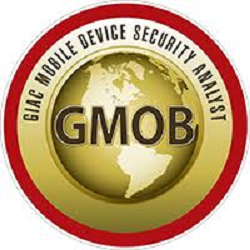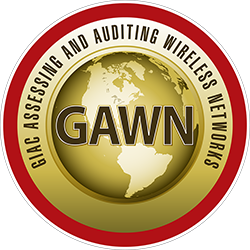- Identify security flaws present in the Internet facing network environment
- Understand the level of risk for your organization
- Help address and fix identified network security flaws
- 1. Pre-engagement Interactions
-
Pre-engagement interactions are all the meetings and documentation that must occur prior to any penetration testing actions. The importance of properly documenting the penetration test cannot be emphasized enough. In this phase, we try to establish the following:
- Scope
- Goals
- Testing Terms and Definitions
- Establishing Lines of Communication
- Rules of Engagement
- Capabilities and Technologies Implemented
- Permission to perform the test
- 2. Intelligence Gathering
-
Intelligence Gathering is performing reconnaissance against a target to gather as much information as possible to be utilized when penetrating the target during the vulnerability assessment and exploitation phases. Activities performed include:
- Open Source Intelligence (OSINT)
-
Mapping network infrastructure via:
- Zone Transfers
- DNS Bruting
- Reverse DNS
- Ping Sweeps
- Port Scanning
- SNMP Sweeps
- SMTP Bounce Back
- Banner Grabbing
- OS Fingerprinting
- Social Engineering
- 3. Threat Modeling
-
Threat Modeling is the use of abstractions to aid in thinking about risks. It can help us to generate a list of prioritized threats applicable to the system that we are analyzing, as well as inform about the risk management process.
- 4. Vulnerability Analysis
-
Vulnerability Analysis is the process of discovering flaws in systems and applications which can be leveraged by an attacker. These flaws can range from host and service misconfiguration, or insecure application design. We utilize both automated tools as well as passive testing to detect vulnerabilities. The automated tools include but not limited to:
- Open Vulnerability Assessment System (OpenVAS) (Linux)
- Nessus (Windows/Linux)
The tools that we utilize in passive testing includes:
- Wireshark
- Tcpdump
- Metasploit Scanners
- 5. Exploitation
-
The exploitation phase focuses soley on establishing access to the system or resource by bypassing security restrictions. After determining a collection of vulnerabilities that exist within the system, suitable targets are identified to begin an intrusive attack to test the system's defences. The activities that comprises the exploitation phase includes:
- Anti-Virus Bypass
- Fuzzing
- Sniffing via Wireshark and Tcpdump
- Password Cracking, Password Guessing
- Network Pivoting, Network Service Exploitation
- 6. Post-Exploitation
-
The purpose of Post-Exploitation phase is to determine the value of the machine compromised and to maintain control of the machine for later use. The activities that comprises the post-exploitation phase includes:
- Extracting blind files
- Finding Important Files
- Remote System Access
- Binary Planting
- Uninstalling Software
- Obtaining Password Hashes in Windows
- 7. Reporting
-
Finally, a report summarising the penetration testing process, analysis and commentary of vulnerabilities identified would be submitted. Critical vulnerabilities identified should be addressed immediately to the overseeing management.

OWASP Mobile Top 10 (2016)
- M1: Improper Platform Usage
- M2: Insecure Data Storage
- M3: Insecure Communication
- M4: Insecure Authentication
- M5: Insufficient Cryptography
- M6: Insecure Authorization
- M7: Client Code Quality
- M8: Code Tampering
- M9: Reverse Engineering
- M10: Extraneous Functionality

OWASP Top 10 (2017) vulnerabilities
- A1 - Injection Flaws
- A2 - Broken Authentication & Session Management
- A3 - Cross-Site Scripting (XSS)
- A4 - Broken Access Control
- A5 - Security Misconfiguration
- A6 - Sensitive Data Exposure
- A7 - Insufficient Preparation for Attacks
- A8 - Cross-Site Request Forgery (CSRF)
- A9 - Using Components with Known Vulnerabilities
- A10 - Underprotected APIs
- Netsparker
- Burp Suite
- Metasploit
- Port Scanners
- SQLMap
- Initiate automated scan using Netsparker
- Analysis on automated scan result
- Verify and exploit vulnerabilities from automated scan (if any)
- Manual testing to exploit logic flaws
- Tabulate findings and compilation of report including recommended fixes
- Re-test

- 1. Signal Coverage & Overextended Network
-
Description:
Detect wireless signal coverage within the intended area, mitigate the risk of attacking and eavesdropping from remote uncontrolled location.
Method:
War driving the area and draw the signal heat map to illustrate the signal coverage and report the overextended signal.
Goals: The goals of this activity include:
- Signal Coverage
- Devices hardware model, software or firmware version disclosed
- Network infrastructure
Standard Compliance
- OWISAM Top 10
- 2. Wireless Authentication & Encryption Testing
-
Description:
Detect insecure key generation algorithms and weak passphrase.
Method:
- WEP replay attack
- WPA(2) - PSK key exchange sniffing and dictionary/brute-forcing attack.
- WPS enabled detection and PIN brute-forcing
- Insecure authentication mechanisms (LEAP, PEAP-MD5..) and attack.
Goals:
The goals of this activity include:
- Recovered key and insecure encryption
- Dictionary/Brute-forcing duration for evaluating passphrase strength.
- WPS enabled device and recovered PIN
Standard Compliance
- OWISAM Top 10
- NIST 800-153
- NIST 800-97
- 3. Open Wireless Network & Controller Testing
-
Description:
Identify risk of open wireless network, detect vulnerabilities of controller server.
Method:
- Sniff open network packet
- Session haijacking.
- Impersonate controller/workstation.
- Vulnerabilities scanning controller server/web portal.
- Penetrate controller server.
Goals:
The goals of this activity include:
- Controller server/web app vulnerabilities.
- Controller server fingerprinting detail.
- Sniffing/Haijacking process.
Standard Compliance
- OWISAM Top 10
- NIST 800-153
- NIST 800-97
- 4. Insecure Network Not Authorized By The Organization
-
Description:
Test the security configuration compliance for the wireless network.
Method:
- Setup rogue access point.
- Impersonate AP to interact client machine.
- Fake RADIUS server authentication
Goals:
The goals of this activity include:
- Review security configuration compliance
Standard Compliance
- OWISAM Top 10
- NIST 800-153
- NIST 800-97
- Wireless Communication Standard
- 5. Detect Rogue Access Point
-
Description:
Search the premises for rogue access points.
Method:
- Wardriving
Standard Compliance
- NIST 800-153
- NIST 800-97
- 6. DDos Attack Testing
-
Description:
Test whether the network is vulnerable to Distributed Denial-of-Service attack.Method:
- Utilize File2air, or any other 802.11 frame-generating tool to flood the wireless network
- Send spoofed deassociation and deauthentication frames floods
Standard Compliance
- NIST 800-153
- NIST 800-97
- 7. Customs Radio Testing
-
Description:
Testing your corporate environment to ensure that you are not exposed by wireless mouse/keyboard.Method:
- Utilize customs software controlled radio to capture/intercept wireless communication between USB receivers and mouse/keyboard and to retrieve the encryption key.
- Steal passwords and inject keystrokes to target computer
Standard Compliance
- OWISAM Top 10
- NIST 800-153
- NIST 800-97
- 8. IoT Consultation and Testing
-
Description:
Testing your custom IoT device to ensure no underlying weakness in your solution.
Areas of testing:
- Hardware
- Application Software and Firmware
- Network and Encryption

-
Auditing Networking Devices & Services
Focus on auditing common network devices and services, including routers, switches, wireless infrastructure, virtualized services, cloud containers, VoIP, mail DNS, and remote access services. -
Auditing Unix Systems
Audit Unix based on existing security accreditation process or industry best practices in terms of configuration, services running, account management, monitoring controls, etc. -
Auditing Windows Systems
Audit Windows system against an existing baseline or industry best practices in terms of the configuration, services running, password and security policy, monitoring controls, etc. -
Web Application Security
Audit web applications, including their configuration, authentication, session management, data security at rest and in transit, and vulnerabilities to common attack

